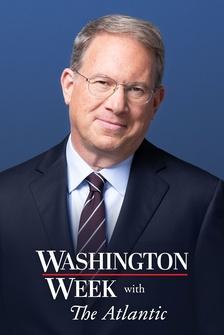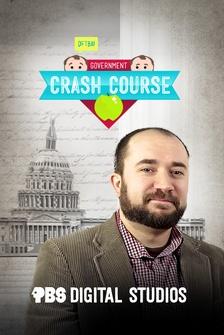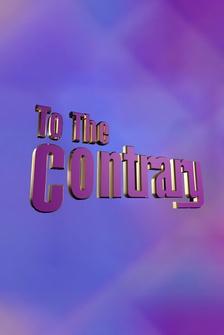Announcer: This program was made possible by the John S. and James L. Knight Foundation, the Andrew W. Mellon Foundation, and by contributions to your PBS station from viewers like you.
Thank you.
Amna Nawaz: For Riz Ahmed, his acting career... and his music career have always gone hand in hand... and in his new film "Mogul Mowgli," which he cowrote, the two art forms collide with a story that hits close to home.
The main character Zed is British like Ahmed, of Pakistani descent like Ahmed, and a rapper, also like Ahmed.
You know, it's in English, it's in Urdu.
It's an acting piece and a rapping piece, and though it's rooted in my specific experience, I think a lot of people can really relate to that of all backgrounds.
♪ Hi, everyone.
This is "Beyond the Canvas" from the "PBS Newshour."
I'm Amna Nawaz.
You just heard from actor Riz Ahmed, whose breakout roles in HBO's "The Night Of" and in the "Star Wars" franchise have given him a global platform, one he's using to make space for more Muslim voices.
Tonight, Ahmed will be joined by other change makers: portrait photographer Jess T. Dugan, muralist Peyton Scott Russell, the artists and curators responsible for the groundbreaking "Liberty" exhibit in Philadelphia, and choreographers at the Miami City Ballet.
For each of these artists and performers, the work is not just about creating art.
It's about creating change that can transform communities, society, and the world.
All the people you're about to meet were first featured on the "PBS Newshour."
Tonight, you'll meet them on a new canvas and maybe see them and their work through a different lens right here on "Beyond the Canvas," and now back to my conversation with Ahmed about changing how Muslims are seen worldwide by changing how they're seen on the screen.
Man: Do your bloody thing!
Yeah?
[Speaking Urdu] There's clearly a lot of you in this new film.
Could this have been something you did 5 years ago or 10 years ago, or is this sort of the perfect story for this time?
I don't think I would have had the guts to make this 5 or 10 years ago because I think I was still in a place where I was thinking about wearing masks in order to fit in for other people.
What I'm interested in now is bringing all of myself to my work, bringing all of myself into every room I enter.
Nawaz: Though the 38-year-old's been acting since the early 2000s, Riz Ahmed became more of a household name after a breakthrough turn and critical acclaim in HBO's 2016 miniseries "The Night Of."
♪ 2020's "Sound of Metal" in which Ahmed played a punk drummer losing his hearing earned him his first Oscar nomination, making history as the first Muslim nominated for Best Actor, and he continues to make music, most recently releasing a new album called "The Long Goodbye."
But I'm a fool.
When you're at war with yourself, you're easy to divide and rule.
She had me locked down, beat me red and blue till I knew that white was right and not brown.
Nawaz: Ahmed's success has come in spite of an industry influenced by a surge of anti-Muslim sentiment post 9/11, narrowing Muslim representation to reductive, stereotypical roles Ahmed says he worked hard to avoid.
Years later, that strategy has paid off, and his superstar status has been cemented, but that, he says, isn't enough.
Exceptions don't change the rules.
Real change comes from not someone having a moment but by people creating a movement.
We're all just running a relay race.
We're all just doing a stretch of the race, and we just pass the baton forwards.
That's just how it is.
Nawaz: New numbers show just how far Hollywood has to go.
Ahmed joined forces with the University of Southern California's Annenberg Inclusion Initiative, the Ford Foundation-- a "Newshour" funder-- and the Pillars Fund-- aimed at amplifying Muslim narratives--to back a first-of-it-kind study breaking down the 200 top-grossing films between 2017 and 2019.
Of more than 8,500 speaking roles, fewer than 2% were Muslim, and over 75% of those roles were boys or men.
Over 90% of films had no speaking role for any Muslim character.
Of, I think, these 200 movies, Muslims are only 1.6% of all speaking characters, and 3/4 of the time, they were either victims of or perpetrators of violence.
What does that do when we're fed this image of a group of people?
It makes it easier to dehumanize them and destroy their lives.
Nawaz: In response, Ahmed and the Pillars Fund have created a multiyear fellowship to jump start and support Muslim artists in the U.S. and U.K. You know, it's 25 grand unrestricted cash grant to this new generation of Muslim writers and directors and storytellers along with an amazing-- I call it the kind of Muslim Avengers-- collective of Muslim talent in Hollywood that can mentor them and make their professional networks available to them, people like Bisha Ali, who just wrote "Ms. Marvel," or Mahershala Ali, Hasan Minhaj, Ramy Youssef.
Yes, it's about access, but it's also just about making sure people can pay the bills and keep the lights on, so we thought that that would be a solution.
Do the Muslim Avengers have, like, secret handshakes, a secret hideout somewhere?
I am imagining all that in my head.
They do, but if I mentioned it, it wouldn't be secret, so, yeah.
Good point.
Good point.
Nawaz: A new initiative for a new generation of creatives entering the industry 20 years after the attack that turned scrutiny and suspicion onto Muslims worldwide.
Ahmed: Suddenly, it became about the West versus the East, us versus them, and actually, a lot of us, people like you and I and millions of people around the world, found themselves to not fit in to those neat boxes and those kind of clean lines.
For me, the hope comes in seeing the next generation, seeing how passionate they are about change, about real change.
To go back to that relay race analogy, I don't know if we're gonna be the guys that are gonna fix this, but maybe we can help the next lot to do that.
Nawaz: And along that journey, Ahmed says, there are plenty of stories left to tell.
Another artist dedicated to seeing their community represented is Jess T. Dugan.
Now they're using photography to change minds.
Here is their brief but spectacular take on representation and the power of portraiture.
I experienced a lot of change as a young child.
My parents got divorced, we moved homes, and for me, looking back, it's very clear that photography became my anchor.
It became the way that I could hold on to the things that were important to me even as other things in my life were changing.
♪ I grew up in Little Rock, Arkansas.
It was made very clear to me from an early age that I didn't look like what people thought a little girl was supposed to look like or I didn't behave the way a little girl was supposed to behave, and so from a very early age, I had a heightened awareness around my own gender identity and expression.
I came out as gay when I was 13.
I started thinking about my gender identity shortly thereafter, and my first experiences with images of queer people, with images that validated my identity as a queer person and as a nonbinary person was in fine art photography books, and so from a very young age, I felt compelled to make images of queer people, including myself, that were as nuanced and complex and beautiful as I knew these individuals to be.
I think portraiture is especially powerful for making people feel seen, both the subjects and the viewers.
I'm really interested in people who are living authentically, and I'm especially interested in that when living authentically for them requires actively working against society or the status quo.
I had chest reconstruction surgery when I was 18 to more closely align my body with my internal gender identity, and my mom was very supportive of that.
She came with me to Texas, where I had my surgery, and when we got back to Boston, I made a photograph of us standing next to one another shirtless, and that was really the beginning of us making pictures together.
Some of my work is more personal and more subjective, but even that work has a political element because of who I am, because of my identity.
My name is Jess T. Dugan, and this is my brief but spectacular take on representation and the power of portraiture.
Next, we hear from more change makers, who are creating art with politics in mind.
In summer of 2020, the world's eyes were focused on Minneapolis.
After the murder of George Floyd, muralist Peyton Scott Russell responded by creating art.
"Newshour" special correspondent Fred de Sam Lazaro spoke with Russell and other Minneapolis artists about how art has both impacted and helped to heal their city in the wake of Floyd's death.
De Sam Lazaro: On plywood and sidewalks, brick walls and windows, creative expressions from this year of racial reckoning now envelop the city that sparked a movement.
In the days following his death, George Floyd's image became an icon around the world.
Here in the city of Minneapolis, there's been an explosion of public art featuring Floyd's face, his last words, and on a broader theme of racial justice.
Artist Peyton Scott Russell grew up near 38th Street and Chicago Avenue in South Minneapolis, the intersection where George Floyd was killed on May 25, 2020.
Peyton remembers the first time he watched the video of Floyd's death.
I just kept seeing my father's face on George's face.
I thought I was alone in how I felt, the anger that I felt in that moment, and I was just-- oh, I wanted to go out and physically protest, and then I had a few people tell me that I had a stronger voice than to go out and physically protest, which was my art voice as a street artist.
De Sam Lazaro: So Peyton got to work on what would become one of the most recognized depictions of George Floyd, a 12-foot black-and-white mural that, for the past year, has been perched just above the spot where Floyd drew his last breath.
There were times that I was weeping painting the picture, and I had to take breaks, and, you know, seeing that face that large and painting it that way with that black and white was really profound to me as I painted it.
My original thought was I was going to install this at night as an act of street art anonymously and paint Mr. Floyd's face as large as I could as a way to say, "Look what you did."
You know, look-- just put it somewhere that was just really intrusive as an obstacle.
De Sam Lazaro: Over the past 12 months, countless pieces have been left at the intersection now known as George Floyd Square-- posters and handwritten notes, flower bouquets and drawings.
Some have made their way here to a pop-up exhibition near the square called "Still Here... Unstolen.
Unbroken."
They were protest signs.
Jeanelle Austin is the lead caretaker.
We spoke to her at the Say Their Names Cemetery, a makeshift memorial for Black people killed by police.
It's just steps from the exhibit.
I like to call it creative expressions of pain and hope instead of art, and really honoring the people who have laid offerings down first and foremost as protest and then also as public grief.
Everything is somebody's offering.
Therefore, nothing is thrown away.
De Sam Lazaro: Austin had a specific vision-- remind people of the emotion during those early days of protest.
Austin: We are building a re-memory.
The space itself, the offerings themself calls people into a place where they remember where we were, they remember where they were, and they are then commissioned to continue the work of racial justice.
De Sam Lazaro: Austin hopes to eventually raise funds for a permanent space large enough to fit all these offerings, as well as a traveling exhibit.
After Floyd's killing and the unrest, Kayim's office repurposed $100,000 in grants for artists responding to the events.
One went to Creatives After Curfew, a collective that painted a series of murals across the city.
Minneapolis native Leslie Barlow is part of the group.
The murals that we started making, you know, of course, on one hand were a way to process what was going on, a way to grieve in community, and to also share these particular stories and messages, but also, it was a way to heal and connect.
De Sam Lazaro: For the "PBS Newshour," I'm Fred de Sam Lazaro in Minneapolis.
One way to change the present is to interrogate the past.
An exhibit at the Museum of the American Revolution in Philadelphia called "Liberty" turns what we think we know about the American Revolution on its head.
By centering the stories of people of color who played critical roles in the nation's inception, museum curators are retelling a familiar story in a more complete way.
"Newshour" correspondent John Yang paid a visit to the exhibit to learn more about some stories that haven't been included in the history books.
Yang: At first glance, this painting at the Museum of the American Revolution in Philadelphia looks like a typical depiction of the time, but take a closer look.
It's a little known moment in U.S. history.
The Rhode Island Regiment, which had two companies of soldiers who were Native American or of African descent, marching past Independence Hall.
Man: This is just an incredible scene that when I laid eyes on it for the first time just really helped to center the contributions of people of African descent.
Yang, voice-over: Michael Idriss is the museum's African-American interpretive fellow.
This group is primarily African-American.
They are led by a white commanding officer, and in the middle of this is this young man who is looking at this scene.
His name is James Forten.
That these men were "as brave of men as ever fought."
Yang: Forten's words, "brave men as ever fought," give this painting its name.
It was commissioned by the museum as the centerpiece of a special exhibit called "Liberty: Don Troiani's Paintings of the Revolutionary War."
Forten is an unheralded Revolutionary War figure, a grandson of enslaved people who was born free.
He fought in the war as a teenager and later became a wealthy businessman and leading abolitionist.
There are approximately 2.5 million people in British North America on the eve of the American Revolution, and they are not all John Adams, right?
Yang: Adrienne Whaley is the museum's director of education and community engagement.
If we are not looking at a story of the American Revolution that is inclusive of all of those people, we're doing poor history, number one, but, number two, we're not providing people with the opportunity to understand how they themselves and communities like theirs might have been dealing with the challenges and the complications of this crazy, chaotic, hopeful, beautiful, challenging time.
Yang: The museum's core exhibit includes many little-noted stories-- the fiercely debated decision by the Oneida Nation of Native Americans to support the Revolution; enslaved women like Phillis Wheatley, the first African-American and only second woman in North America to publish a book of poetry; and enslaved people of African descent who fought for the British in exchange for their freedom.
By design, all the figures are the likenesses of people now living.
Whaley: One of the reasons that we do that is to emphasize the fact that these are real, lifelike.
Like, they have got the breath and the blood of real people in them, right?
When you look at a figure like this that's actually been life-cast, right, you start to be able to make connections to the people and the stories of the past.
And you talked about being life-cast.
This is you.
This is your skin.
This is your face.
This is literally me.
This is my skin.
This is my face.
One of the first things that I was asked to do at the museum was to lend my likeness to one of the tableau figures.
Yang, voice-over: There are also flesh-and-blood interpreters in costumes playing the roles of historical figures.
The museum's Black interpreters portray both enslaved and free people.
Interpreter Kalea Williams.
You know, other Black folks will look at me and say, you know, "How does it feel to portray a slave?"
And I generally don't, but of course, I would.
That's a role that I would like to portray.
To me, there's beauty in portraying who was there.
Yang: Currently, Williams portrays Helena Harris, a Philadelphia schoolteacher, a rare profession for a Black woman in the 1790s.
We have a very narrow idea of where Black folks played a role in the history of the United States.
I want people to come away with the understanding that Black history is U.S. history.
Indigenous history is U.S. history, is world history, is all of our history.
Everyone's history is part of who we collectively are.
Yang: Michael Idriss, the interpretive fellow, portrays a Philadelphia baker based on Cyrus Bustill, a formerly enslaved man who owned a successful bakery.
Idriss: I want to tell stories that meet people of African descent at bedrock, at inception.
When do we want it?
Now!
Yang: Idriss says it also serves to draw a direct line from the 18th century to today's reexamination of racial justice.
It's a way of revealing that there has always been tension.
It's a revolution that is ongoing in so many respects.
Yang: Points of view that haven't always been included in history books.
The exhibit "Liberty: Don Troiani's Paintings of the Revolutionary War" runs through September 2022.
For the "PBS NewsHour," I'm John Yang in Philadelphia.
Finally tonight, we meet a group of artists changing the way they move through the world and remaking a classic in the process.
At the Miami City Ballet, an innovative performance of "Swan Lake" revisits the ballet's history and reimagines it for the 21st century.
"PBS Newshour" chief arts correspondent Jeffrey Brown spoke with choreographer Alexi Ratmansky about how he's bringing his own twist to the classic work.
Uh-huh.
Now almost good except that you were, like, too active with your feet.
Going back.
Brown: A dance studio several weeks before opening the classic ballet "Swan Lake."
Ratmansky: You make it clear for the audience that that's how the love is born.
Brown: And Alexei Ratmansky, one of the world's leading choreographers, was working with dancers of the Miami City Ballet to bring to life this fairy tale of a prince, young women turned into swans, and doomed love.
We should get the feeling that the movements are born from the music, or vice versa, the music is born from their movements.
But they go together.
Yes, exactly.
Flame in your heart starts growing.
Brown: Ratmansky, now 53, was himself a dancer, trained at Moscow's Bolshoi Ballet school, before turning to making dances.
Choreography for him begins with the music.
I put on my headphones, and, uh...
I have this little TV in my head.
In your head?
And I see the little figures of dancers doing steps, and then I need to find good combinations of steps, remember them, develop them, explain what I mean, explain well to the dancers, inspire the dancers.
Brown: But, with "Swan Lake," he's done something different, returning to the origins of one of ballet's best-known and most-loved works.
Composed by Tchaikovsky, "Swan Lake" was given classic shape in 1895 by choreographers Marius Petipa and Lev Ivanov in a production at St. Petersburg's Mariinsky Theatre.
His new/old version, first put on by the Zurich Ballet, strips down some of the action and emphasizes the pantomime and acting.
So much about ballet is different now, he says-- dancers' bodies, training, even their toe shoes.
So he calls this a historically informed production.
We try to use all the historical materials available, but when we get, into the studio, we need to make it live theater.
Brown: And that, in an exclusive North American premiere, is now in the works in the Art Deco Miami beach home of the Miami City Ballet, a company that's taken on both old and new ballets and been acclaimed for its artistry and energy.
[Piano playing] The company houses a school for the very young... ♪ up to dancers like these, age 16 to 18, working under Spanish-born Arantxa Ochoa to prepare for auditions with ballet companies far and wide, training in technique but also, she says, mental preparation.
We not only care for the training that is how do they do that perfect peg or how that leg is up there, you know, pointed toes, all of that, but also that they're in the right place because that's-- once that you get in the company-- a lot of them, they get to the company, but then they have to survive in the company.
Brown: Artistic director Lourdes Lopez knows the ballet life well.
Born in Cuba and raised in Miami, she became a principal dancer with the New York City Ballet.
A painting in her office shows her with its legendary leader George Balanchine.
She returned home 10 years ago to take the helm here.
The art form has given me so much as an immigrant.
It has changed my life, and it continues to change my life every day.
Brown: There's also an energy and pride here in the diversity of talent-- Latina leadership, dancers from all over, especially Central and South America.
For me, it was--to come to Miami City Ballet changed my life.
Brown: Katia Carranza came to Miami from Mexico at age 19.
She'd had plenty of classical training but found a new world of dancing here.
Nathalia Arja came from Brazil at 15.
Now she and Katia are company veterans, getting the extraordinary experience of working with Alexei Ratmansky to create his vision of "Swan Lake," especially honing their mime movements to convey the emotions he wants.
We'll spend hours just having a conversation of how do you say, "You promised to love me," so what-- Without the words.
Without the words, just body language.
And "Swan Lake" nor is also-- it's difficult technically, but most-- there is an extra layer of how-- you know, being clear on how you tell the story.
Can you say that to me right now?
"You promise to love me"?
It would be "You to me promise to love," but there are so many ways to do that.
Brown: For now, the hard work and the giant leaps go on.
For the "PBS NewsHour," I'm Jeffrey Brown at the Miami City Ballet.
Now it's always been true that art imitates life, but these artists and creators all show us how art itself has the power to change life around us.
Thanks for joining us to hear their stories tonight.
There is more online, where you can join the conversation at pbs.org/canvas, and find more "Canvas" arts stories on the "PBS Newshour."
I'm Amna Nawaz.
For all of us at the "PBS Newshour," thanks for joining me here on "Beyond the Canvas."
We'll see you soon.
Coming up next time on "Beyond the Canvas," singer-songwriter and 17-time Grammy Nominee Brandi Carlile opens up about her memoir and making her music alongside other artists who are all using their words to make an impact.
Man: I definitely consider myself a teacher first, poet second.
Woman: It was the most difficult piece of writing I've ever done.
Carlile: There are just two very different lanes for women and men, particularly in roots music.
♪ ♪ Whoo ♪ ♪ ♪ Whoo ♪ ♪ ♪ Whoo ♪ ♪ ♪ Whoo ♪ ♪ Announcer: This program was made possible by the John S. and James L. Knight Foundation, the Andrew W. Mellon Foundation, and by contributions to your PBS station from viewers like you.
Thank you.









